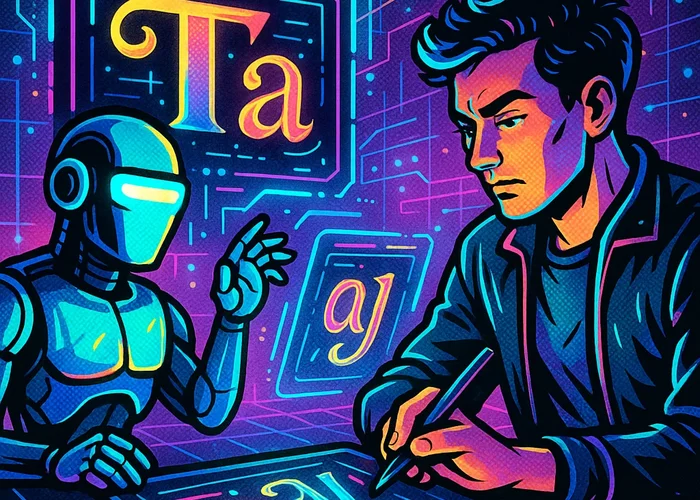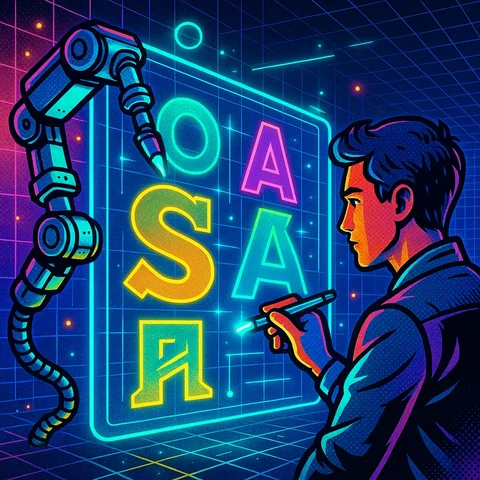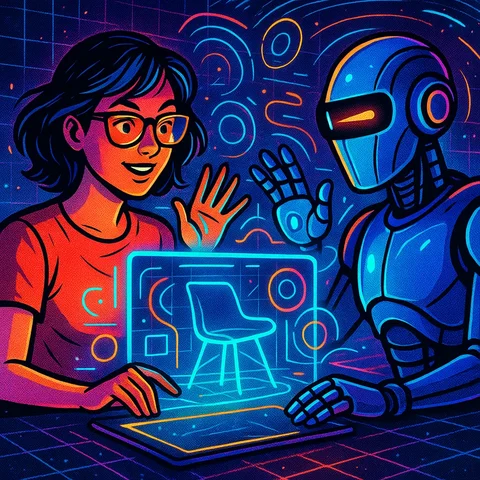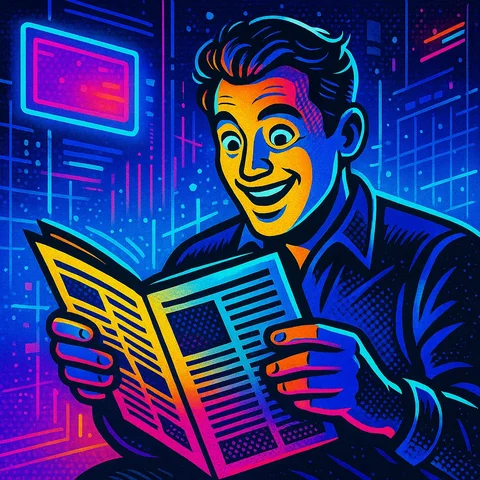How AI Tools Enhance Human Creativity in Typography Design
Discover how AI tools can augment human designers in typography projects, boosting creativity and efficiency without replacing the human touch.

How AI Tools Enhance Human Creativity in Typography Design
At a Glance
- AI-driven design tools have significantly reduced project timelines, with IBM reporting a 10x productivity increase using Adobe’s generative AI.
- Generative AI enables rapid prototyping, allowing designers to explore hundreds of variations in font styles and layouts effortlessly.
- Industry case studies demonstrate that AI-assisted workflows can lead to higher engagement and more innovative typographic concepts.
- While AI automates routine tasks, human designers still play a crucial role in guiding and refining outputs, ensuring creative control remains central.
- The future of typography is poised for deeper integration of AI, bringing more personalized, reactive, and accessible design solutions.
Understanding the Role of AI in Modern Typography
The evolution of typography has always been intertwined with technological advancements, from movable type to digital fonts. Today, AI in design is transforming how typographers conceive, create, and iterate their work. Major firms like Monotype, which owns iconic fonts such as Helvetica and Futura, are exploring AI’s potential for reactive typography that adapts based on emotional or psychological data, making type more engaging and contextually relevant.
Recent reports, such as Monotype’s 2025 trends, highlight that AI could democratize typography creation, enabling anyone—even without extensive design training—to craft compelling typefaces through intelligent agents and chatbots. This shift signifies a move from manual craftsmanship to a hybrid model where machine learning in graphic design augments human expertise.
How AI Can Support and Enhance Human Designers

Empirical evidence underscores the profound impact of AI on designer productivity and creative scope. For instance, IBM revealed that integrating Adobe’s generative AI tools shortened their design cycle from two weeks to just two days—a roughly 10x gain (Reuters, 2024). This acceleration allows designers to focus more on high-level conceptual work such as brainstorming and storyboarding rather than routine iterations.
Furthermore, AI tools like Adobe Firefly have empowered IBM’s 1,600-strong design team to generate over 200 images with more than 1,000 variations, achieving 26 times higher engagement than previous campaigns (Axios, 2024). Such results demonstrate that creative AI applications not only boost efficiency but also enhance the quality and impact of visual communication.
While AI automates many mundane tasks—such as font pairing, layout testing, and image generation—human designers remain central to guiding these outputs, curating the most compelling options, and injecting strategic artistic judgment. As IBM notes, automation “frees designers to concentrate on creative tasks,” suggesting a collaborative model rather than outright replacement.
Examples of AI-Driven Typography Projects
Leading companies are already deploying AI in typography projects. Monotype, for example, is investigating how AI can produce reactive typography that adjusts dynamically to user data, opening new avenues for engaging digital interfaces. Their aim is to make type more accessible and adaptable, leveraging AI in design to personalize experiences.
In practical terms, AI-driven projects include automated font generation, innovative font pairing algorithms, and real-time responsive typography for websites and apps. These initiatives exemplify how digital typography can evolve into a more fluid and interactive element within user interfaces.
Balancing Automation and Creativity
The integration of AI into typography workflows raises important questions about maintaining creative integrity. Industry leaders advocate for design augmentation rather than automation—using AI to handle repetitive tasks so human designers can focus on strategic and aesthetic decisions.
The technological foundation of these tools is primarily based on generative neural networks like GANs and diffusion models, trained on vast datasets of font styles and design motifs. These models interpolate and extrapolate to create new typefaces and design concepts, expanding the creative palette for typographers.
However, some voices, such as Zeynep Akay from Dalton Maag, urge caution, emphasizing the importance of preserving human creative control amid increasing automation. Striking this balance ensures that AI enhances rather than diminishes artistic expression.

Future Trends in AI and Typography
Looking ahead, the landscape of future of typography involves increasingly sophisticated AI tools capable of personalized and reactive design. As AI systems improve, we can expect more automated tuning of typography based on user preferences, context, and brand identity, further streamlining creative workflows.
The ongoing debate centers on how AI will reshape the role of designers. While some predict potential workforce reductions, others see a shift toward higher-level oversight and strategic guidance—where AI-assisted design workflows serve as powerful collaborators.
Industry trends indicate that AI will continue to democratize typography creation, making complex design accessible to broader audiences, and fostering richer, more engaging visual communication. As IBM and other pioneers demonstrate, the synergy between human creativity and AI’s computational prowess promises to unlock unprecedented possibilities in digital typography.
Conclusion
AI tools are fundamentally transforming typography design—accelerating workflows, expanding creative possibilities, and enabling more personalized experiences. These innovations are not about replacing human designers but augmenting their capabilities, allowing for faster, more innovative, and more engaging typographic work.
If you’re a designer or part of a creative team, now is the time to explore how AI can serve as a collaborative partner in your projects. Embrace these designer productivity tools to elevate your craft and stay ahead in the evolving landscape of digital typography.


